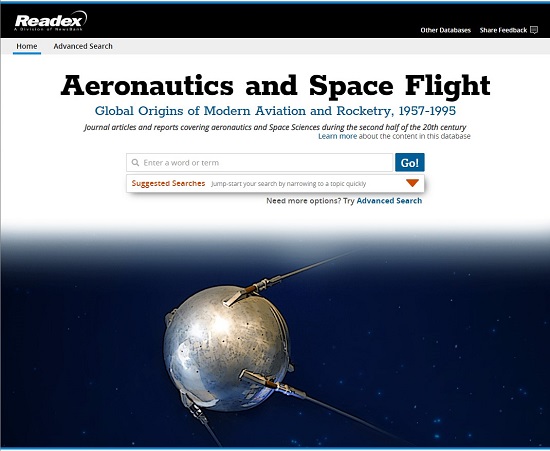“An Alluring Magnet”: The Cold War, Martian Exploration, and the Pull of the Red Planet
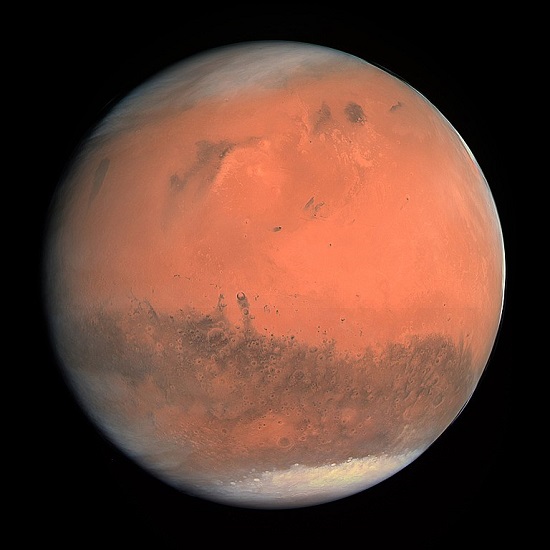
More than a thousand years ago, Egyptians noticed a shining red object that seemed to wander through the night sky. Fascinated, they painted the celestial body onto star charts and the ceiling of tombs. Chinese, Greek, Roman and other ancient astronomers also tracked the red planet, making up stories about it and attributing it with an array of astrological powers.
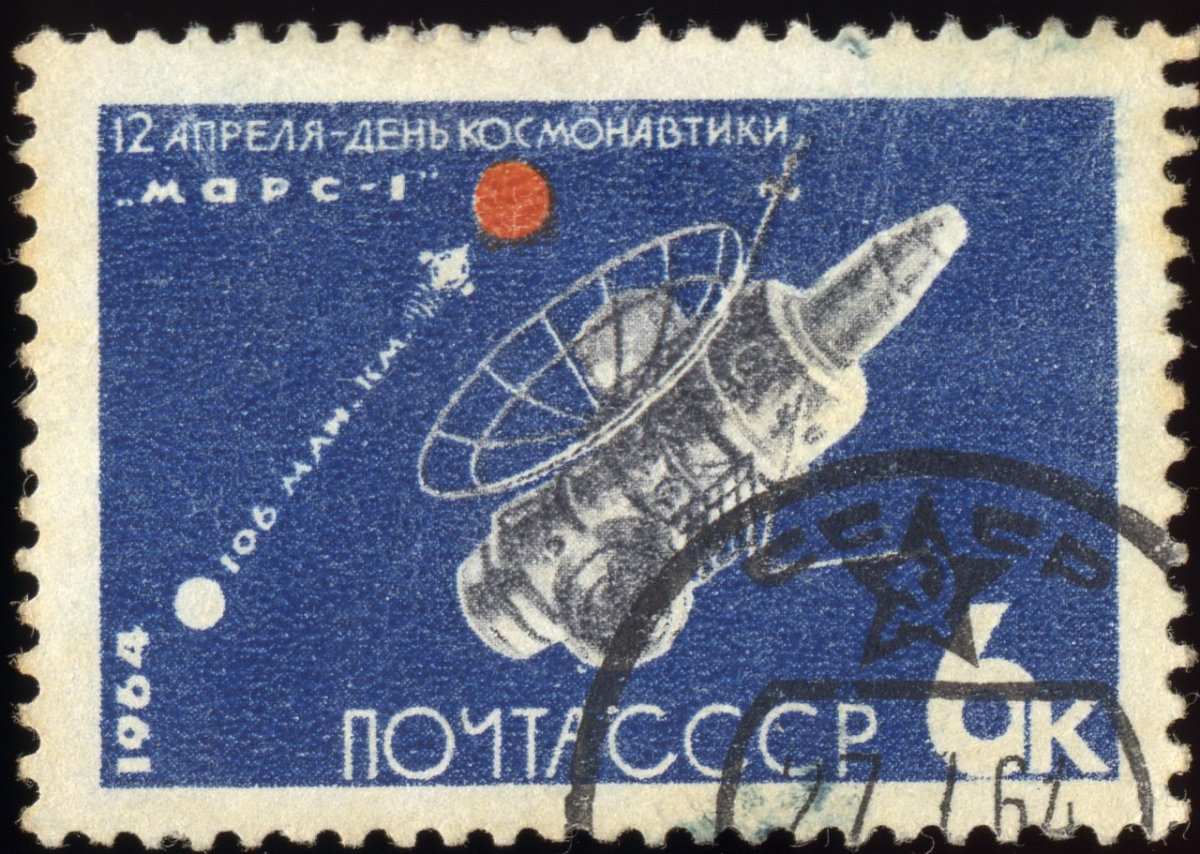
In more modern times, too, people obsess over Mars. It has stunning topography, with a volcano three times higher than Mount Everest and gorges four times deeper than the Grand Canyon. Massive windstorms shape its sands into ever-shifting, otherworldly dunes. Its surface temperature is 138 degrees Fahrenheit colder than Earth’s, and its atmosphere deadly thin. Although liquid water once pooled and coursed across the surface of Mars, that water seems largely locked up as ice today.
We know all of this because robots have been exploring Mars since the 1960s, sending data and images back to scientists on Earth. Between the 1960s and the 1990s, a division of the CIA monitored, recorded and translated into English publications and broadcasts documenting this information. Today, as new technology brings the possibility of sending humans to Mars (or finding life on Mars) ever closer, these sources are increasingly relevant.
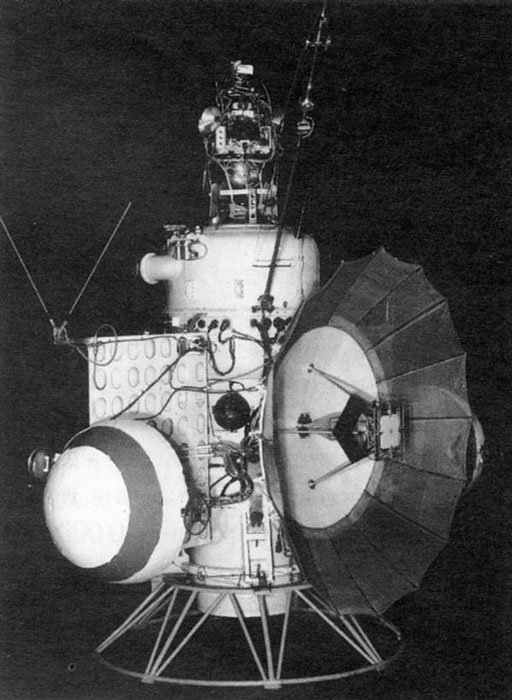
Some of the earliest documents in this archive—now digitized as part of Readex’s Aeronautics and Space Flight: Global Origins of Modern Aviation and Rocketry—cover the doomed Mars 1 mission, a Soviet spacecraft launched in November 1962. The Bucharest-based periodical Stiinta si Tehnica, or Science and Technology, summarized Mars 1’s mission that month:
The main purpose for the launching of this approximately one ton space laboratory was to carry out long range studies in cosmic space, to establish interplanetary radio communications, and to photograph Mars and then transmit the photos taken by radio.
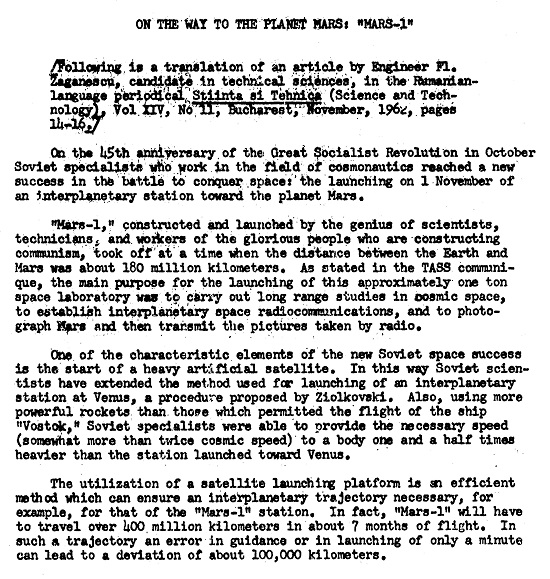
Less than a year after launching, Mars 1 experienced technical difficulties and ceased communicating. Still, the mere fact of its launch during the height of the space race ensured that other attempts to reach Mars would soon follow. As the 1960s progressed, Soviet probes became the first to fly by Mars, and the first to enter the orbit of another planet.
The CIA’s interest in these exploits surely fueled competition between the United States and the Soviet Union—exacerbating the Cold War, perhaps, but also ensuring that Martian exploration progressed at a rapid pace. Ultimately, the two world powers’ thirst for knowledge about Mars led to rare cooperation during a tense political moment.
In 1971, for example, when the USSR’s Mars-2 and Mars-3 became the first probes to make contact with Mars’ surface, they collected data in tandem with the American satellite Mariner-9. In 1972 the Russian state newspaper Pravda reported:
The placing of Soviet and American space vehicles equipped with mutually complementary sets of scientific instruments into orbit around Mars, their simultaneous functioning over a long period and the exchange of information between Soviet and American scientists…during the performance of the experiment provided favorable conditions for making considerable progress in the study of Mars.
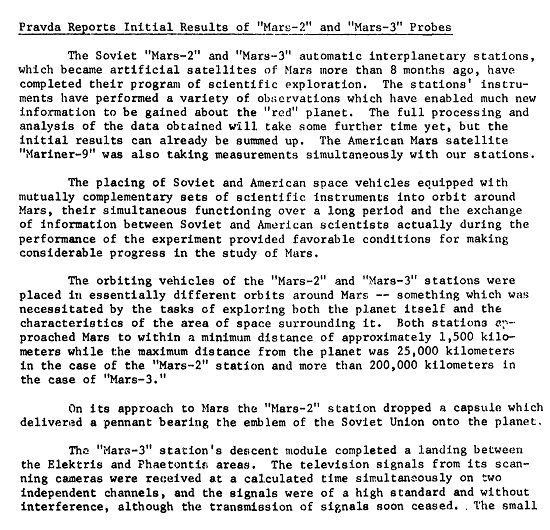
In fact, the collaboration of Soviet cosmonauts and American astronauts spurred some of the earliest serious proposals to send manned spacecraft to Mars. “Mars, the neighbor of planet Earth, located in the so-called thermal zone of life in the solar system, draws the imagination like an alluring magnet…powerfully absorbing us in the field of its own gravitation,” wrote S. Leskov in Komsomolskaya Pravda in 1987. Describing a digital meeting between top American and Soviet scientists, Leskov continues:
It is already past midnight, but instead of fatigue, it is enthusiasm that rules the discussion, faith in the possibility of an undertaking unheard of before….Looking at the famous Soviet academicians, scientists and space engineers in the Space Pavilion of the Exposition of Achievements of the USSR Economy, I am convinced that they, too, have fallen under the spell of the enigmatic planet. And on the other side of the ‘space bridge,’ the equally enthusiastic American astronomers and designers….The discussion is about a joint expedition of the USSR and the USA to the planet Mars.
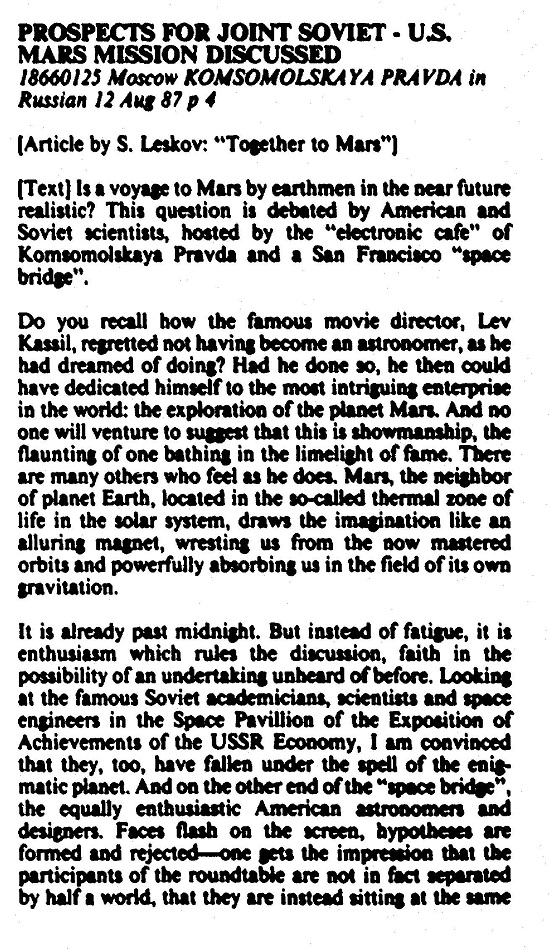
Others articles from the CIA archive make human exploration of Mars seem not only feasible, but imminent. “The flight of astronauts to Mars will take place at the beginning of the next century,” assured NASA administrator Daniel Goldin in 1992.

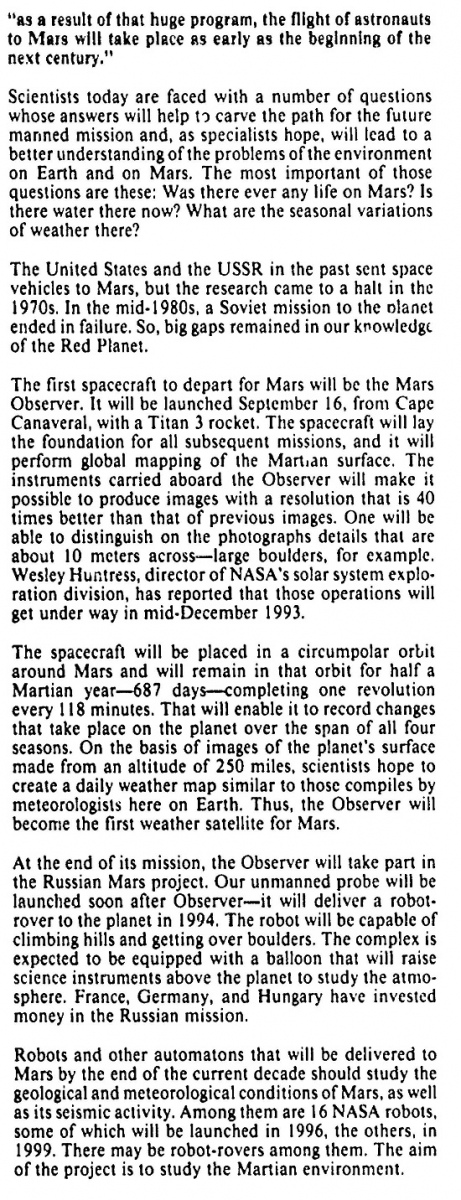
But as the Cold War fizzled to an end, the United States and Russia became less invested in a joint mission to Mars. “The Mars-94 project is again in danger of being cancelled because of financial difficulties,” reported Moscow’s Segodnya in 1993. Technical hiccups and politics, the article adds, also complicated the project.

Today, while the dream of sending a man to Mars hasn’t yet been realized, the possibility of finding or supporting life there still shimmers on the horizon. NASA’s Mars 2020 rover mission aims to find signs of past microbes on the planet and seek out the most hospitable conditions for future human landings; while books and movies like The Martian have sparked greater interest among the general public. As researchers in a range of disciplines turn to history and geopolitics to better understand our modern Martian fascination, one thing is clear: the more we know about Mars, the more it captures our imaginations.
Aeronautics and Space Flight: Global Origins of Modern Aviation and Rocketry is one of five unique digital collections in the new Origins of Modern Science and Technology family, each of which provide a wealth of information for numerous STEM and humanities disciplines. For more information about making Aeronautics and Space Flight: Global Origins of Modern Aviation and Rocketry available at your institution, please contact Readex.

